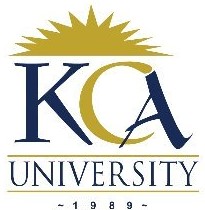
UNIVERSITY EXAMINATIONS: 2018/2019
EXAMINATION FOR THE DEGREE OF BACHELOR OF SCIENCE IN
INFORMATION TECHNOLOGY
BIT 2303: DISTRIBUTED SYSTEMS
FULL TIME/PART TIME/DISTANCE LEARNING
DATE: AUGUST, 2019 TIME: 2 HOURS
INSTRUCTIONS: Answer Question One & ANY OTHER TWO questions.
QUESTION ONE
a) Briefly explain the meaning of each of the following terms. Give one example or one type for
each.
i) Distributed system (2Marks)
ii) Transparency (2Marks)
iii) Middle ware (2Marks)
b) Differentiate between Network operating systems and distributed operating systems.
(4Marks)
c) Briefly explain five distributed systems rules of thumb (5Marks)
d) The major issues with respect to the implementation of a directory service are the potential size
of the directory, the frequency of clients’ request and fault tolerance. Describe three techniques
that can be employed to implement a scalable and fault tolerant directory service.
(6Marks)
e) Describe any four characteristics of distributed systems. (4Marks)
f) Explain the meaning of the term ‘Remote IPC’. And describe any four functions of remote IPC
(5Marks)
QUESTION TWO
a). Briefly explain the meaning of the following terms
i) Distributed file system (2Marks)
ii) Remote method invocation (2Marks)
b) Discuss any three types of middle ware models (6Marks)
c) Describe four types of distribution transparency (4Marks)
d) State and explain two concurrency problems in distributed systems (3Marks)
e) Briefly explain three categories of faults that can occur in a distributed system (3Marks)
QUESTION THREE
a) Distinguish between the following terms in the context of parallel and distributed systems
i ) Starvation and deadlock (2Marks)
ii) Dependability and availability (2Marks)
b) Describe three algorithms for achieving mutual exclusion (6Marks)
c) Differentiate between shared and write locks as used in concurrency control (4Marks)
d) There are various strategies of handling deadlocks. Describe any four of these strategies.
(4Marks)
e) Briefly explain what you understand by ‘file replication’ (2Marks)
QUESTION FOUR
a) Fundamental models are concerned with description of properties that are common in all of
the architectural models. Describe three main fundamental models. (3Marks)
b) Distributed file system typically provides three types of services. Each can be thought of as a
component of a distributed file system. State and explain each of these services
(3Marks)
c) Briefly explain four features of a good distributed file system (4Marks)
d). Security goals of any computer system are decided by its security policies. Briefly explain
three computer security goals that can be set in a distributed system. (6Marks)
e) There are four types of security threats to consider when designing and implementing any
distributed system. Identify these threats. (4Marks)
QUESTION FIVE
a) Briefly explain the meaning of the terms ‘clock skew’ and clock drift. (4Marks)
b) A system that fails is not adequately providing the services it was designed for. Describe four
types of failures in distributed systems. (8Marks)
c) Distributed systems use distributed algorithms to ensure synchronization. Describe four
properties of these algorithms. (8Marks)
